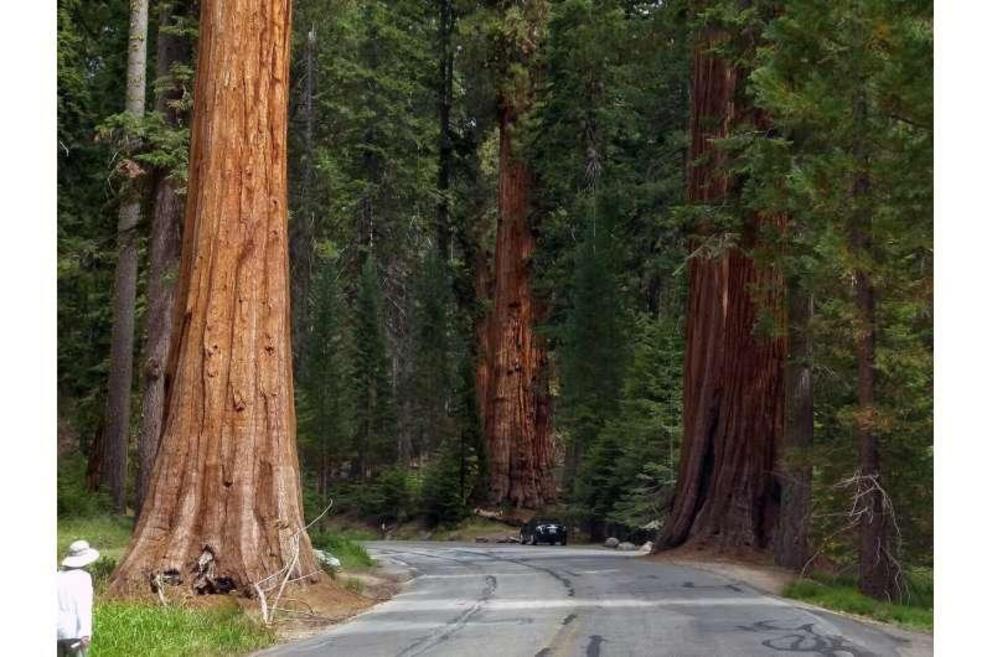California lost thousands of giant sequoias. It's tragic, but at least we are aware
Pretty much anyone who has had the privilege of standing next to one of the biggest, oldest giant sequoia trees understands the rush of awe. Here is a tree so burly, cars could—and once did—drive through a tunnel carved out of the massive trunk. (Thankfully, we don't do that anymore.)
But even more extraordinary is knowing that this organism was alive here in California long before Europeans ever set foot here. The few oldest trees date back more than 3,000 years.
But as the public tracked the fight against the KNP Complex fire in September, which threatened giant sequoias to the point where their lower parts had to be tucked under fire-resistant foil blankets, it might have missed the forest for the trees.
A new report from the National Park Service makes that bigger picture frighteningly clear: Between the Castle fire in 2020, and this year's Windy and KNP fires, California lost more than 10,000 of the most giant of the giant sequoias. Those are trees typically at least 500 years old and 4 feet in diameter. The report estimates that within three to five years, California will have lost nearly 20% of these so-called monarch trees as more sequoias succumb to their burns over time. And they grow naturally only in California, on the western slopes of the Sierra Nevada.
This is catastrophic news when you consider that this species has evolved to survive wildfire, and in fact depends on it to release the seeds from its cones. But a combination of events—ultra-hot wildfires, possibly blanketing the tops of the trees, along with damage to the sequoias from bark beetles, which gain a stronger foothold when trees are stressed by drought—has led to higher mortality rates among the most historic trees. Not only that, many of the burned trees haven't been dispersing seeds in large numbers.
What makes this report eye-opening isn't just the shock of the state's beloved giants being wiped out by the thousands, but that a federal agency is connecting it to climate change. As the nation readies for elections over the next year, it's worth remembering how the Trump administration scrubbed mentions of climate change from the websites of many government agencies, especially the Environmental Protection Agency.
The public needs to understand the very real consequences of this nation's overall lackluster response to climate change. Hiding from it isn't going to save the sequoias or practically uncountable numbers of other species—or preserve the coast and prevent human deaths. At least the scientists are not muzzled these days. We cannot afford to go back to the days when the response to bad climate news was to cancel it. A scare might do us some good.
That's not to say the giant sequoia is about to go extinct. About 60,000 of the monarchs remain—though that's a big decrease from the 75,000 of a few years ago. Younger trees still abound, as well as sequoias that have been planted elsewhere. They seem to take to cultivation easily and thrive in spots from the Pacific Northwest to Europe to Africa.
Still, the state and thus the world are losing the ancient trees at a frightening pace. Next to them, our human life spans are just a blip on the timeline of the planet. Let's not blow our brief time here.

